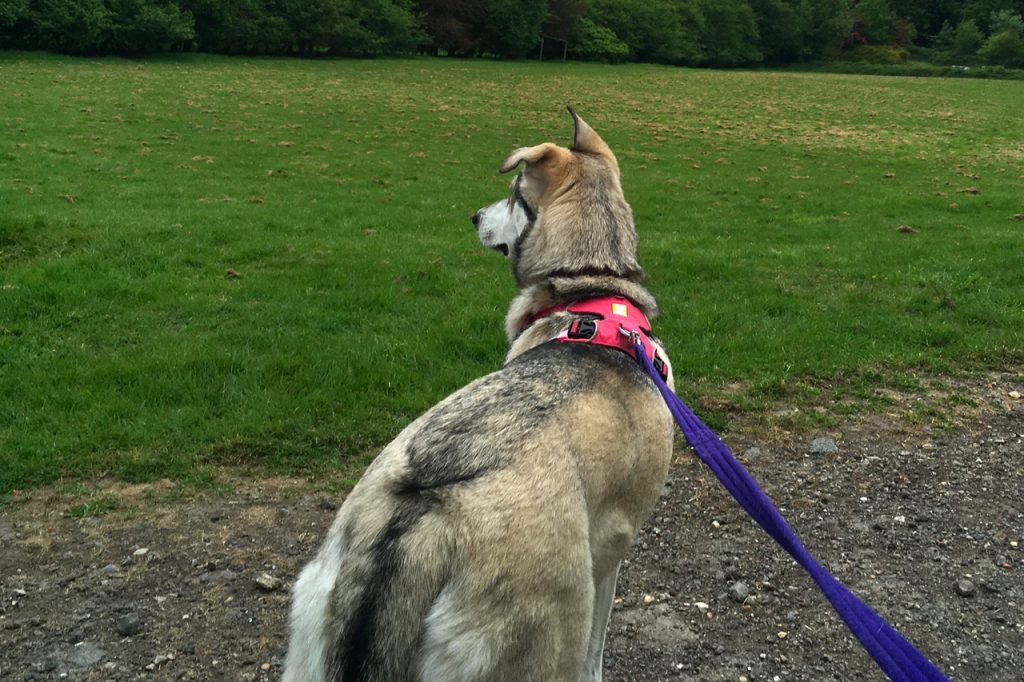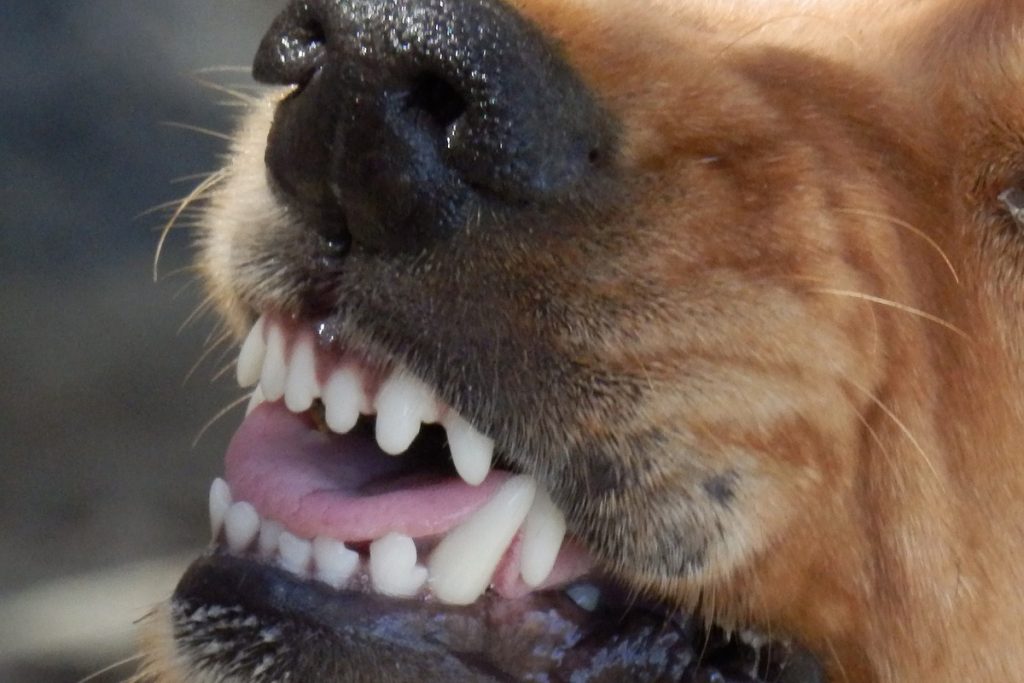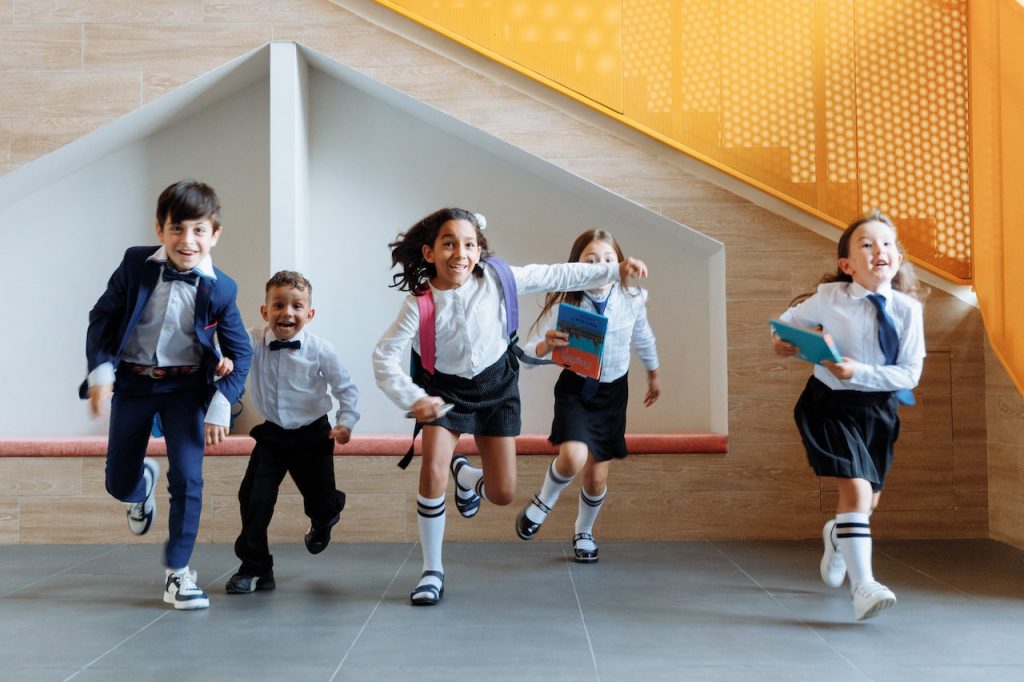It sounds like a simple question doesn’t it? If you asked dog owners when they start along their journey with reactive dogs what they want to achieve, it’s really simple-they just want the dog to stop barking/lunging at other dogs. If you ask them, most of them want their dogs to be able to cope with a dog running up to them to say hi on walks without all hell breaking loose. They also probably want to be able to enjoy their walks again and not find it so incredibly stressful- any of us who have lived with reactive dogs have at some point felt the impending doom as we see the hands move round the clock and realise it’s nearly time for the dreaded walk again!
There’s an important word in that though and it’s ‘cope’, how we are all coping is a pretty good way to measure progress with reactive dogs.
The first thing we all think about is distance. Many of the dogs we work with are reactive if they even see a dog in the distance, over 30m away. We have to be realistic with our expectations and we don’t expect these guys to be coping with Rocky the overly friendly black lab down the road running up at 100mph to sniff their bum for 30 seconds within a few weeks. We would be aiming to see the distance they can cope at decease, how close they can cope will vary on so many things- what the other dog is like/what it’s doing/how stressed your dog is due to what happened earlier etc. If your dog was coping at 30 metres and now they are coping well with dogs the other side of the road (who aren’t staring at them etc) then you are doing okay and things are progressing. You’re not at the final destination yet but you’re moving in the right direction.
How well your dog recovers when things do go wrong is also a really good indicator that things are progressing. We often see that recovery improves before reactivity does. You may find that in the early days your walk was ruined and you’d need to go home if your dog went over threshold but now your dog recovers quickly if they do get a bit stressed or react and you can carry on your walk with them back under threshold. Quite often these things improve as owners get so much better at helping their dogs when they have the right guidance- they are proactive and they know how to help their dogs de-stress and they read them so well they can help them before they even creep up to threshold.
And what about how the owners are feeling about walks? That’s a really good sign of how things are going. Part of living with and working with reactive dogs is making changes and finding ways to enjoy life together. It may not be the life they’d imagined together but are they finding happiness in the things they do? Is everyone (human and canine) enjoying their outings more (this may not even be normal walks for while)? Most importantly, have stress levels dropped for everyone as that is absolutely top of the list in what we are aiming for.
Have we managed to increase social interaction? This is huge, both in terms of the mental well-being of the dog but also for the owners too. Do we now have any dogs we can cope with parrallel walking with at a distance? Have we managed to make any friends during the journey so far? We love running our reactive dog classes as they’ve facilitated so many friendships, some of the dogs are (almost!) social butterflies with 3 or 4 different dog friends now that they’ve met at classes and they now go for walks with or visit freedom fields with and some may perhaps just enjoy being able to follow another dog at a distance. This takes time and it can take weeks or months and the result may be a sneaky playbow a few feet away or a sneaky flirt from a distance. The humans may have made friends too who have similar dogs or at least they may not feel so alone now. Living with reactive dogs can feel terribly isolating if you are on your own and dealing with it but there are so many people and dogs out there who are dealing with the same issues. Reactivity impacts on both sides of the relationship and it’s important that the humans feel supported too.
If we just focus on interaction and coping with other dogs running up into their space on walks you miss the bigger picture. These are really special dogs to live with, they teach us so much more than we could ever imagine was possible. You learn how to really understand them and how they are feeling without even thinking about it. We also learn a great deal about acceptance and realising it’s not just about what we want to achieve. we may just want our dog to be fine in the park, but what does the dog really want?
As Penel often says- ‘If you don’t make changes nothing will change’. If you feel like things really aren’t progressing with your reactive dog we would suggest you look at whether you’ve managed to reduce stress levels- have you managed to avoid the really stressful walks for a while so that your dog is in a better place to learn? Are there other sources of stress in their lives that are impacting on them? Do you need to go back to your vet and revisit whether there could be medical causes that are underlying their reactivity.
Be proud of the small moments in every day when things go well, these small steps are all so important in terms of progress and remember that the bigger picture should be to enjoy our time together with our dogs.
Our time with our dogs is not unlimited so we need to make sure that we are finding fun along the way.
Copyrighted content by Laura McAuliffe, Dog Communication. If you like my posts, please share them using the share button. Please don’t copy and paste or edit my images. Sharing my posts allows me to reach more people and share the message.


